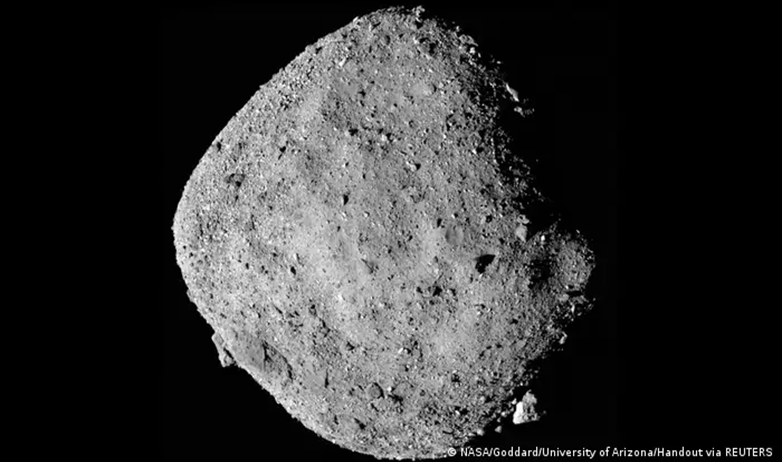Opening the largest sample of an asteroid may give hope for a better understanding of life on Earth

NASA brings the largest sample of an asteroid to Earth.
NASA announced that it had found “black dust and debris” in the largest sample ever brought back from an asteroid. Analysis of the sample would allow scientists to better understand the formation of the solar system and how Earth became habitable.
NASA began opening the capsule of the OSIRIS-REx probe that collected pieces of an asteroid, and announced that it had found “black dust and debris” inside it, even before starting to analyze the bulk of the sample. Seven years after its launch, the capsule landed on Earth on Sunday in the American desert, after an extremely dangerous maneuver.
NASA estimates that it was able to collect about 250 grams of material from the asteroid Bennu in 2020, the largest sample ever collected from an asteroid.
When performing this operation that day, the space agency realized that it was impossible to close the lid of the assembly chamber. But the cargo was eventually secured by being transferred as planned to the capsule.

The diameter of the black asteroid Bennu, which is named after an ancient Egyptian god, is about 550 metres.
But because of this leak, scientists expected to find remains outside the collection chamber, in the box it was placed in. The first lid was opened on Tuesday (September 27, 2023), in a sealed room at the Johnson Space Center in Houston, Texas, USA. NASA announced that its teams " “I immediately found black dust and debris,” without specifying whether they were actually pieces of the asteroid.
The US space agency wrote that this material will be analyzed, and a “careful disassembly” of the collection chamber will be carried out “in order to access the main sample inside.” Using 60 different scientific approaches, a team of about 200 scientists hopes to analyze the sample.

A press conference is scheduled to be held on October 11 to “reveal the sample.” Analyzing the composition of the asteroid Bennu would allow scientists to better understand the formation of the solar system and how the Earth became habitable.
NASA said regarding the sample that it "will open a time capsule of the beginnings of our solar system." “The impossible has become possible,” said NASA Administrator Bill Nelson. ", congratulating the collaborators for bringing the largest sample of asteroids ever to Earth. He added, "This will help scientists investigate the formation of the planet, will improve our understanding of asteroids that could impact Earth, and will deepen our understanding of the origin and formation of our solar system.”

NASA scientists waited a long time for the return of the probe, which was launched from NASA's Cape Canaveral Spaceport in September 2016 and arrived at the asteroid Bennu about two years later.
After dropping the sample, the probe immediately continued its journey to another asteroid called Apophis. In 2005, the Japanese space probe Hayabusa was able to land on an asteroid. In 2010, it returned to Earth the first soil samples ever collected from such an asteroid.
Although there are other probes that have reached asteroids, Hayabusa is the only probe that has been able to return samples to Earth so far. It is worth noting that the diameter of the black asteroid Bennu, which was named after an ancient Egyptian god, is about 550 meters. The asteroid is expected to pass near Earth in about 150 years.
Source: websites

